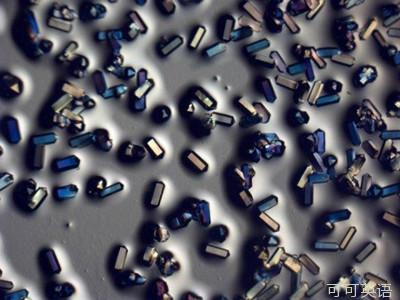Using fire to boil water has long been the preferred method for making steam. But now, thanks to specially coated nanoparticles of sand, we can use sunlight.
用火燒開水是生產蒸汽的首選方式。然而如今我們能利用光能生產蒸汽,這得多虧有特殊納米分子涂層的沙粒。
Researchers at Rice University in Texas made fine grains of sand, much smaller than the width of a human hair, and coated them in gold or carbon. They sprinkled these nanoparticles into water, and then focused sunlight on them. Each particle acted as a nano-sized boiler, absorbing the heat from the sunlight and turning surrounding water molecules from liquid to vapor. This solar steam was produced without having to boil the whole pot, in as quickly as five seconds.

德克薩斯州萊斯大學的研究人員生產了一種比頭發絲還精細的沙粒,把它們涂在金子或者碳上。然后把這些納米顆粒灑在水里,再將陽光集中在這些顆粒上。每個分子扮演著納米級鍋爐的角色——吸收太陽的熱量,加熱周圍的水分子直至蒸發成水蒸氣。生產這種太陽能水蒸氣只需五秒鐘,而且不需要煮沸整壺水。
The research was published in the American Chemical Society's journal ACS Nano.
這項研究發表在美國化學學會的雜志《ACS納米》上。
The nano-sized boilers turn sunlight into steam with 80 percent efficiency and could prove a boon in places that lack fossil fuels or electricity. The nanoparticles are easy to make, relatively cheap and can be used over and over again.
這種納米級鍋爐將太陽光轉換成蒸汽的熱效率為80%,給那些缺乏化石燃料和電力的地方帶來了福音。這種納米分子制作方便,成本相對便宜,并能反復利用。
The technology could enable folks in resource poor areas to do everything from purifying water to sterilizing surgical equipment. And that might be enough to start a new, if smaller, Steam Age.
這項技術能讓資源貧乏地區的人們做任何事情——從凈化水源到外科手術器械的消毒。那將足以開啟一個(假設是相對較小的)新蒸汽時代。












